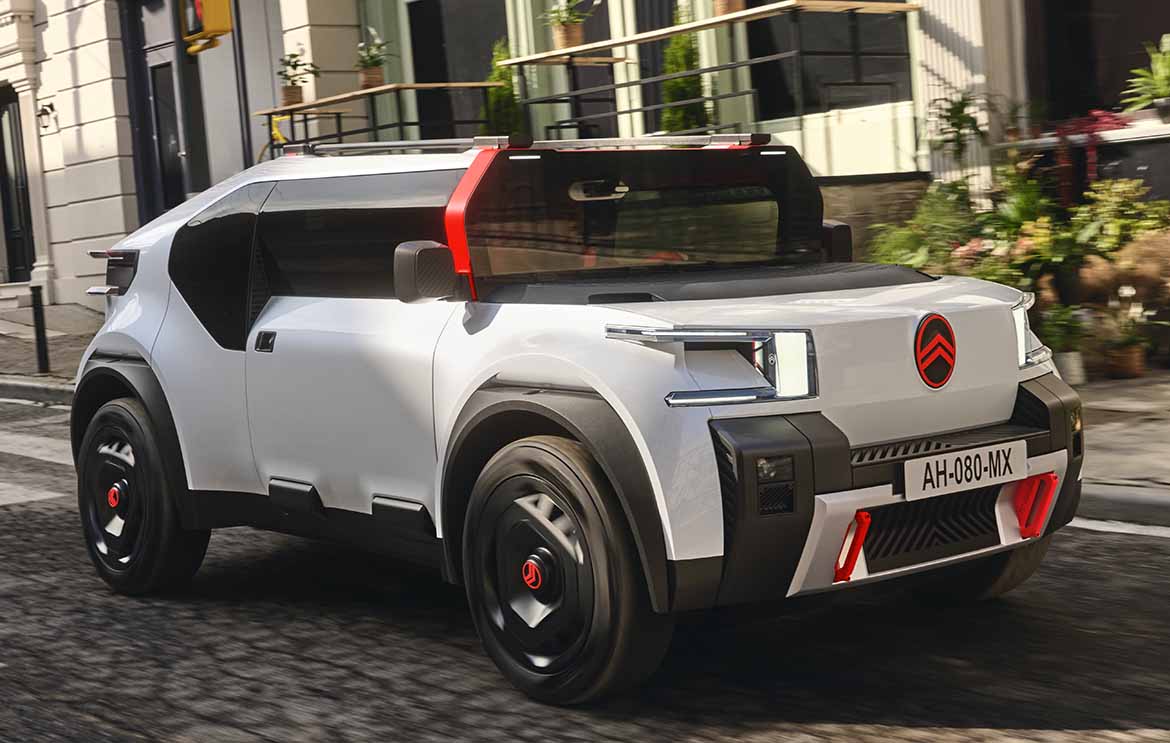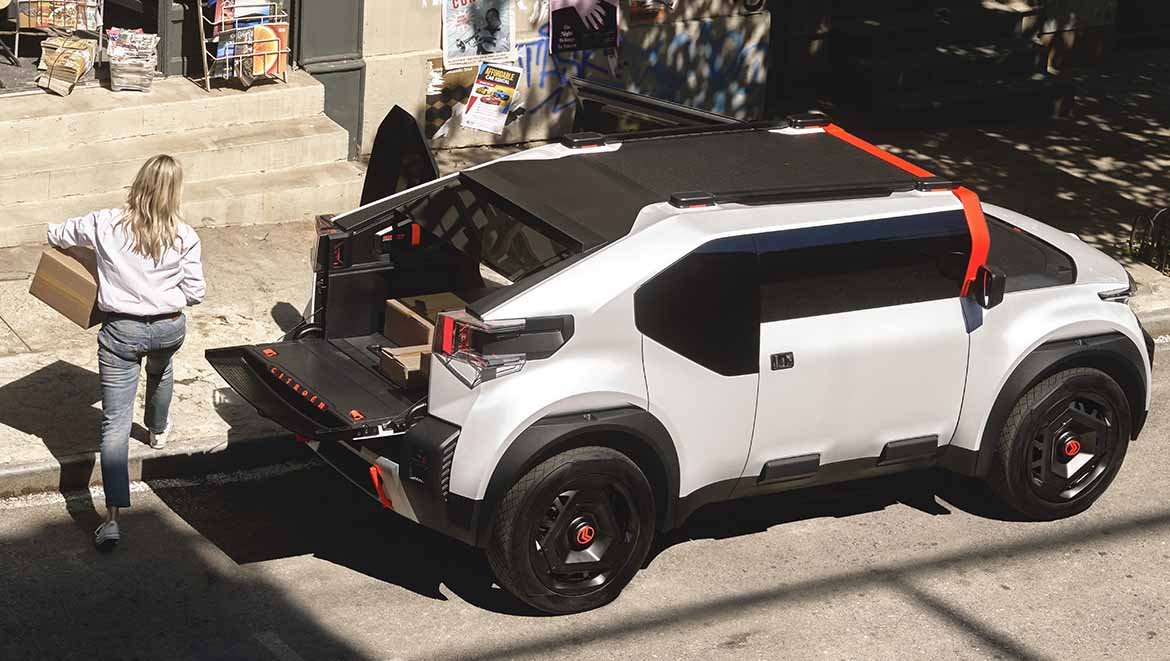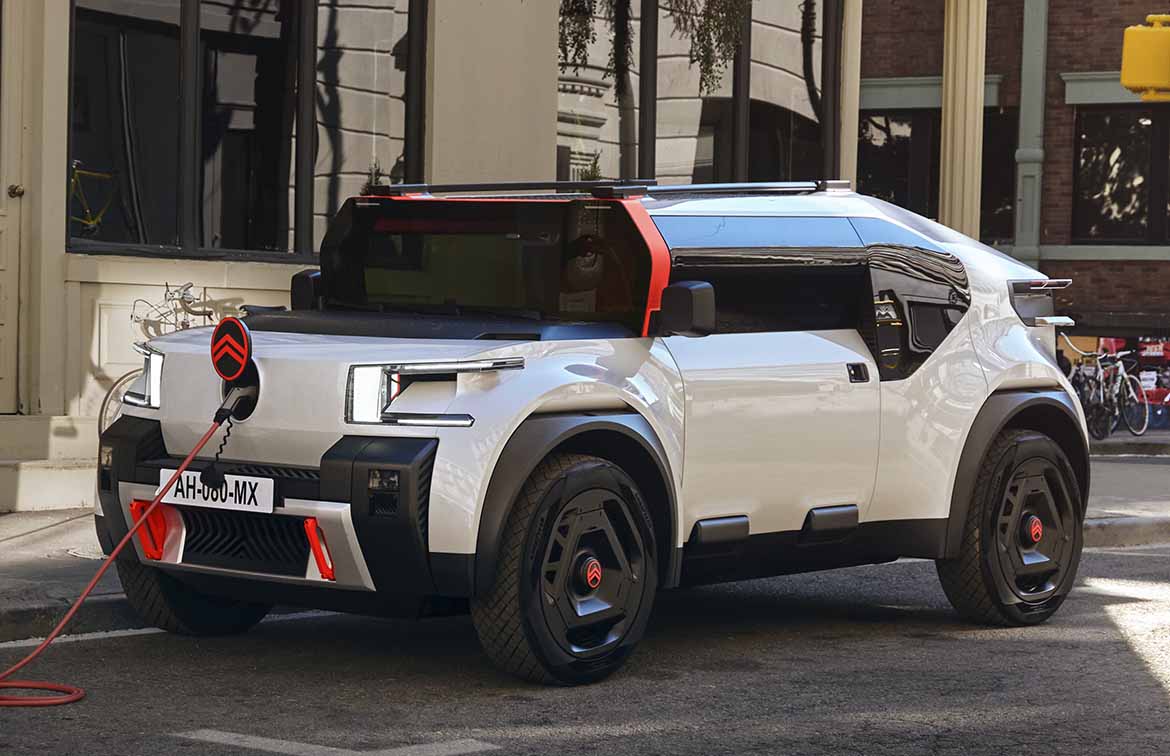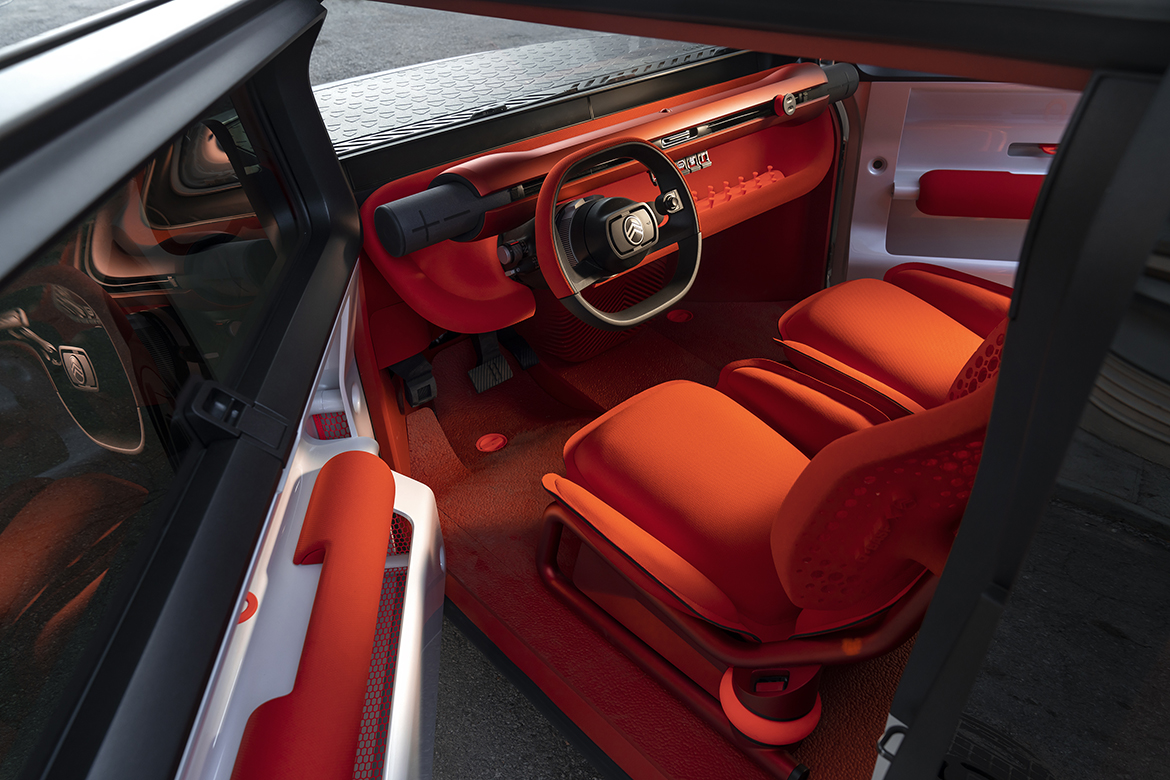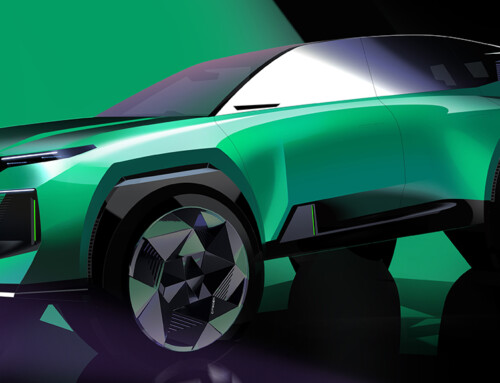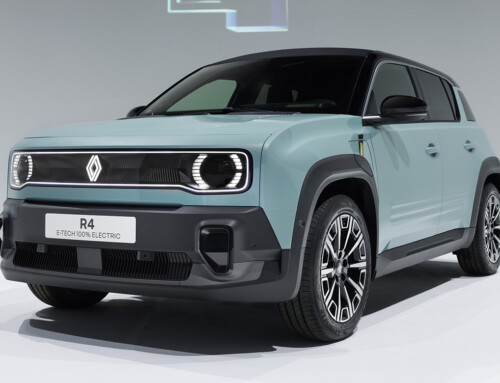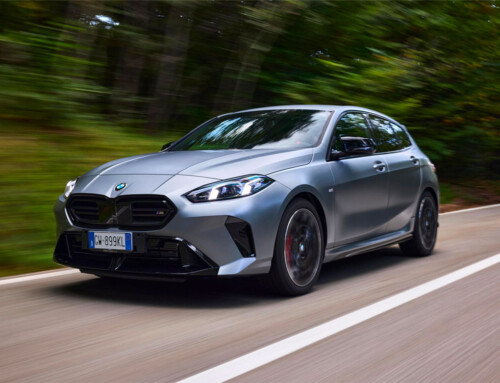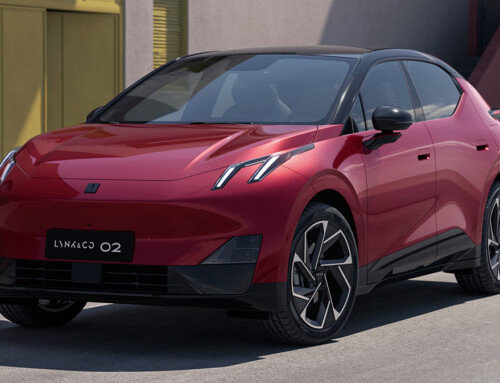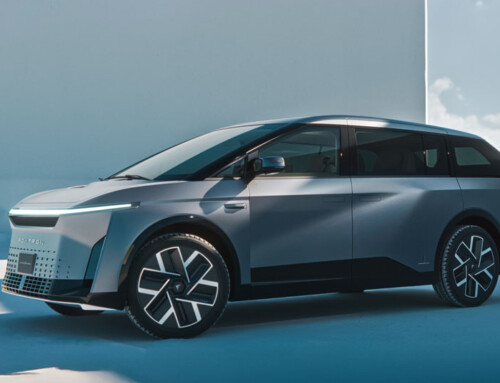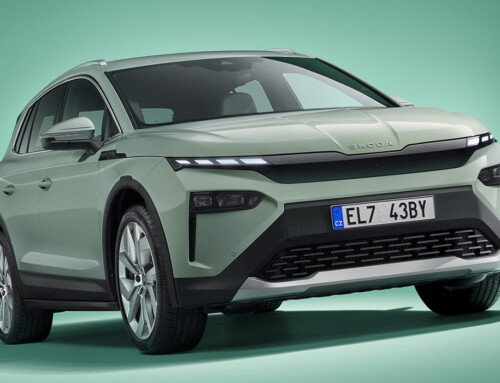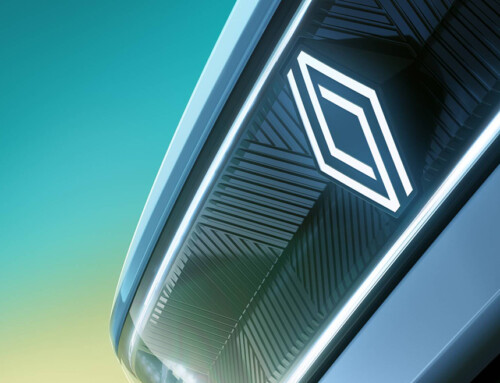For Citroën, imagining a future in which personal mobility is accessible to all is a fixed idea. The success of Ami demonstrates the brand’s ability to give impetus, challenge the status quo and imagine an ambitious concept car: Citroën Oli (read all-ë), a ”laboratory on wheels” that goes against the current industry trend of building increasingly heavy, complex and expensive electric vehicles. Oli sees itself as a vehicle of tomorrow for families. Far from being a ‘palace on wheels’, weighing 2,500 kg, full of screens and gadgets, Oli demonstrates that with the right number of features, the inventive use of recyclable materials and a sustainable production process, Citroën can meet the need for mobility that is both emission-free and inexpensive, attractive and suitable for all lifestyles.
With its unusual appearance and silhouette, Citroën Oli unashamedly expresses a strong character, exuding personality, productivity and positivity in a design similar to that of a compact SUV measuring 4.20 m long, 1.65 m high and 1.90 m wide. For Pierre Leclercq, Citroën’s design director, Oli is a model of purity and ingenuity for families who want to go beyond status and car stereotypes. “Citroën has a purity that other brands don’t have. It is much more difficult to design something that is pure and unique in itself than to create something overly complicated. Think of iconic vehicles like the new Ami or the 2CV: silhouettes that are instantly recognisable as Citroëns that, thanks to their pragmatism, can also live longer.”
The team thought about each element of Oli based on the need for multiple functionalities, the reduction of weight and complexity by optimising the number of parts, and the responsible use of recycled or recyclable materials wherever possible. Although the bonnet, boot and roof of a conventional car may seem like a good platform for doing certain jobs such as pruning trees, in reality they are rarely strong enough to stand on. But this is not the case with the Citroën Oli. As well as giving it a unique silhouette, its flat bonnet, roof and rear panels with a ‘pick-up truck floor’ were chosen to ensure low weight, high strength and maximum durability. Created in collaboration with partner BASF, they are made of recycled corrugated cardboard moulded into a honeycomb structure, sandwiched between fibreglass-reinforced panels. “All Oli’s key design elements are perfectly horizontal or vertical, and this is something we wanted to experiment with,” says Pierre Leclercq.
Instead of a complete dashboard with multiple screens and hidden computers, Oli features a single tube-shaped bar. On one side the steering column and steering wheel are integrated, and in the centre are a smartphone holder and five controls for the climate control system. Notably, the dashboard uses only 34 elements, whereas in a similar compact family sedan there are around 75 components in the dashboard and centre console. The centre tube has an electrified rail on which USB sockets can be slid to connect accessories. Two air vents, one in front of the driver and the other in front of the passenger, allow the use of a smaller air conditioning unit to further increase efficiency and reduce weight. On the dashboard is the Elastollan® (BASF) ‘sofa’, a 3D-moulded, bright orange, recyclable thermoplastic polyurethane (TPU) storage shelf with flexible protruding elements to keep certain items such as coffee cups or beverage cans locked in place.

